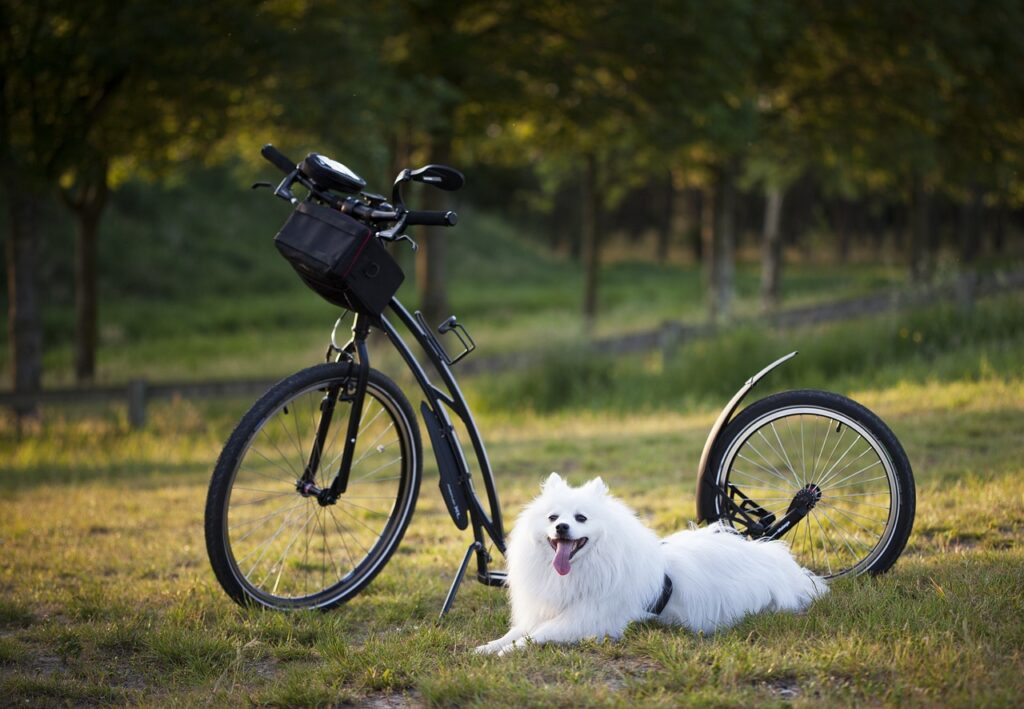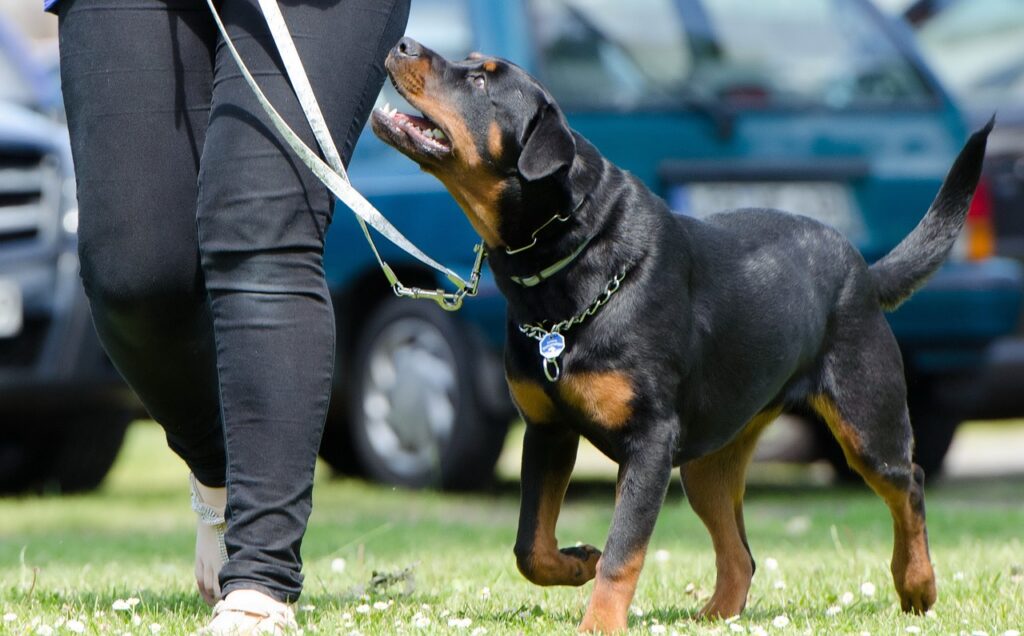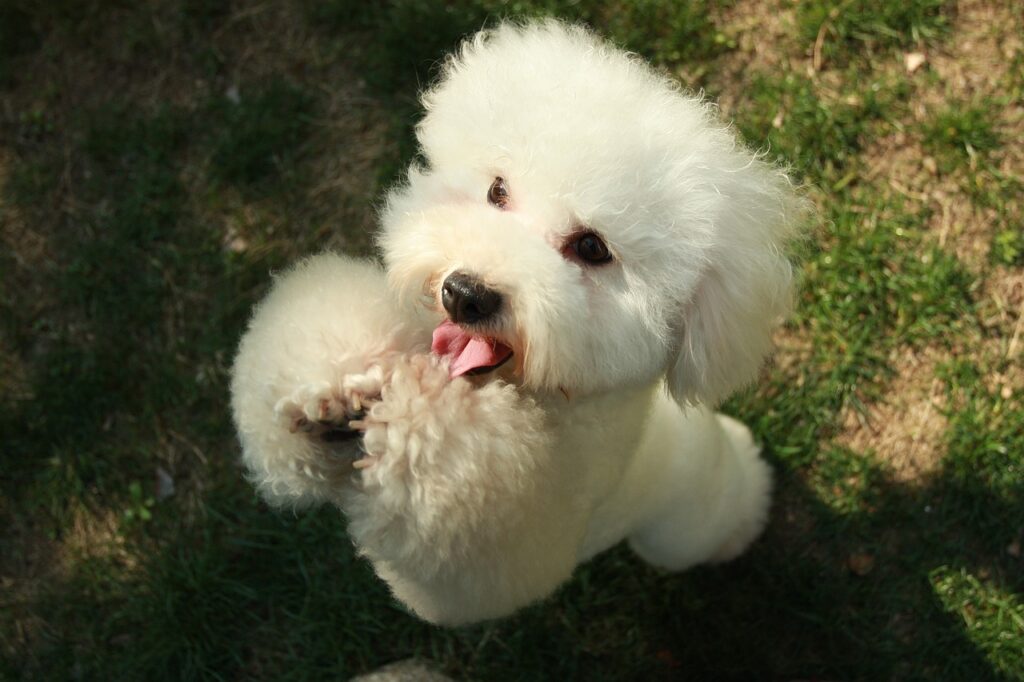
So, you’ve got a new furry friend and you want to make sure they become a social butterfly. You’re not alone – many dog owners find themselves wondering how to best socialize their four-legged companions. From puppy playdates to obedience classes, there are plenty of ways to expose your pup to new experiences and help them develop positive behavior around other dogs and people. In this article, we’ll explore some effective strategies and tips to guide you through the process of socializing your beloved pooch.
Understanding the Importance of Socializing Dogs
Why is socialization important for dogs?
Socialization is a vital aspect of a dog’s life that helps them develop into well-rounded and confident companions. It involves exposing dogs to various people, animals, environments, and experiences, allowing them to learn appropriate behaviors and adapt to new situations. Socialization helps prevent behavioral issues such as fear, aggression, and anxiety, ensuring a happy and balanced life for dogs and their owners.
When should socialization begin?
Socialization should begin as early as possible, ideally during the puppy stage. Puppies have a critical period of socialization, which usually ends around 12-16 weeks of age. During this time, they are most receptive to learning and forming positive associations with new experiences. However, it’s never too late to socialize dogs, and even adult dogs can benefit from socialization activities.
The benefits of socializing dogs
Socializing dogs provides numerous benefits that enhance their overall well-being. It helps them develop good manners, improves their ability to handle stressful situations, and reduces the likelihood of behavioral issues. Socialized dogs are more confident, adaptable, and able to interact positively with people, animals, and various environments. Additionally, socialization strengthens the bond between dogs and their owners, leading to a more fulfilling relationship.
Creating a Positive Environment for Socialization
Safety considerations
When engaging in socialization activities, safety should always be a priority. Ensure that the environment is secure and free from potential hazards. Use proper equipment, such as a well-fitting leash and collar, to maintain control over your dog. Be aware of your surroundings and assess any potential risks that may arise during socialization sessions.
Positive reinforcement techniques
Positive reinforcement is an effective method to encourage desired behaviors during socialization. Reward your dog with treats, praise, or play whenever they exhibit appropriate behavior, such as approaching new people or calmly interacting with other dogs. This positive association helps dogs develop positive emotional responses to socialization experiences and reinforces good manners.
Setting realistic expectations
It’s important to set realistic expectations when socializing your dog. Every dog is unique, and some may take longer to adjust to social situations than others. Respect your dog’s individual pace and comfort level, and avoid rushing them into overwhelming situations. By setting realistic expectations, you create a positive and stress-free environment that promotes successful socialization.

This image is property of pixabay.com.
Introducing Your Dog to People
Gradual exposure to different individuals
When introducing your dog to new people, start with gradual exposure. Invite trusted friends or family members into your home, allowing your dog to become comfortable with their presence. Once your dog shows signs of relaxation, slowly increase the level of exposure by introducing them to more individuals in different settings. This gradual approach helps your dog build confidence and promotes positive associations with meeting new people.
Using treats and toys to create positive associations
Using treats and toys is an effective way to create positive associations when introducing your dog to people. Have the person offer a treat or play with a toy while calmly interacting with your dog. This positive reinforcement helps your dog associate meeting new people with enjoyable experiences. Over time, your dog will learn to associate meeting new people with positive emotions, making social interactions more enjoyable for both your dog and the people they meet.
Teaching your dog appropriate greetings
Teaching your dog appropriate greetings is essential for successful socialization. Teach your dog to sit or stay when meeting new people, ensuring they remain calm and controlled during the greeting. Reward your dog for exhibiting appropriate behavior, such as not jumping or excessive barking. Consistency and positive reinforcement will help your dog learn and master proper greeting manners.
Socializing Your Dog with Other Dogs
Choosing suitable playmates
When socializing your dog with other dogs, it’s important to choose suitable playmates carefully. Look for dogs of similar size, temperament, and play style to ensure a positive and compatible interaction. Avoid exposing your dog to dogs that may display aggressive tendencies or intimidate your dog. Compatibility between dogs contributes to a positive socialization experience.
Supervised play sessions
It’s crucial to supervise play sessions between dogs to ensure their safety and appropriate behavior. Observe their interactions closely, looking for signs of discomfort, fear, or aggression. Intervene if necessary to prevent any potential issues from escalating. Supervision allows you to guide and redirect their behavior, ensuring that play sessions remain positive and enjoyable.
Avoiding aggressive interactions
While socializing your dog with other dogs, it’s vital to avoid aggressive interactions. If you notice signs of aggression in either dog, such as growling, snarling, or stiff body language, separate them immediately. Aggression can escalate quickly and lead to dangerous situations. Prioritize your dog’s safety and well-being by avoiding aggressive encounters and focusing on positive and friendly interactions.

This image is property of pixabay.com.
Exposing Your Dog to Different Environments
Introducing new sights and sounds
Expose your dog to new sights and sounds gradually to help them become comfortable in different environments. Start with low-stimulus environments and gradually increase the level of exposure as your dog becomes more at ease. Take walks in different neighborhoods, visit parks, or even introduce them to new sounds through recordings. This exposure enhances their ability to handle new and potentially overwhelming environments.
Visiting various places
Take your dog to various places to expose them to different environments. This may include pet-friendly stores, outdoor cafes, or even public events. By exposing your dog to a variety of locations, you help them become accustomed to different smells, sounds, and distractions. This exposure promotes adaptability and confidence in unfamiliar settings.
Creating a calm and confident dog
Consistently exposing your dog to different environments helps them develop into a calm and confident companion. Dogs that are well-socialized and familiar with various surroundings are less likely to exhibit fear or anxiety. By nurturing a calm and confident mindset through exposure, you provide your dog with the tools to navigate the world with ease.
Socializing Your Dog with Children
Teaching children proper interaction
When socializing your dog with children, it’s crucial to teach them proper interaction techniques. Children should be educated on how to approach and engage with dogs respectfully. Teach them to avoid sudden movements or loud noises that may startle or agitate the dog. Show children how to gently pet the dog and remind them to always ask for permission before approaching a dog they are unfamiliar with.
Supervising interactions between dogs and children
Supervision is key when dogs and children interact. Never leave young children and dogs alone without proper adult supervision. Observe the behavior of both dog and child closely, looking for signs of discomfort or tension. If either party shows signs of distress, calmly separate them and provide a safe space for the dog to retreat to. By supervising these interactions, you ensure the safety and well-being of both the child and the dog.
Reading and responding to your dog’s body language
Understanding your dog’s body language is essential for successful socialization with children. Learn to recognize signs of stress, fear, or discomfort in your dog, such as tail tucked, ears pinned back, or avoiding eye contact. If your dog displays any of these signals, gently remove them from the situation and provide them with a calm and soothing environment. Responding to your dog’s body language helps prevent negative experiences and supports positive socialization.

This image is property of pixabay.com.
Addressing Fear and Anxiety During Socialization
Recognizing signs of fear or anxiety
It’s important to recognize signs of fear or anxiety during socialization to address them appropriately. Common signs include panting, trembling, excessive yawning, excessive licking, or avoidance. If your dog displays these signs, it’s crucial to take a step back and reassess the situation. Pushing your dog beyond their comfort zone can worsen their fear or anxiety, so it’s important to proceed at their pace.
Gradual desensitization techniques
Desensitization is a helpful technique to alleviate fear or anxiety during socialization. Start by exposing your dog to a mild version of the fearful stimulus and gradually increase the intensity or duration as your dog becomes more comfortable. For example, if your dog is afraid of car rides, start by letting them sit in a stationary car and gradually progress to short drives. Gradual desensitization allows your dog to build confidence and overcome their fears in a controlled manner.
Seeking professional help if needed
If your dog’s fear or anxiety during socialization persists or worsens, it’s important to seek professional help. A certified professional dog trainer or a veterinary behaviorist can provide guidance and develop a customized socialization plan for your dog. They have the expertise to address specific fears or anxieties your dog may experience, ensuring their socialization journey is positive and effective.
Continuing Socialization Throughout Your Dog’s Life
Maintaining positive experiences
Continuing socialization throughout your dog’s life is crucial to maintain their social skills. Regularly expose them to new experiences, people, and environments to prevent regression. By consistently providing positive socialization experiences, you solidify their learned behaviors and help them adapt to different situations with ease.
Attending training classes
Attending training classes is an excellent way to continue socializing your dog and reinforcing their social skills. Training classes provide controlled environments where dogs can interact with other dogs and their owners under the supervision of a professional trainer. These classes also offer opportunities for dogs to learn and practice obedience commands, further enhancing their socialization capabilities.
Reinforcing social skills regularly
Consistently reinforcing your dog’s social skills is crucial for long-term success. Incorporate socialization activities into your regular routine, such as visits to dog parks, playdates with other dogs, or walks in busy areas. By reinforcing their social skills regularly, you strengthen their ability to navigate various social situations and maintain positive interactions.
Dealing with Setbacks and Challenges
Understanding potential setbacks
Socialization may come with setbacks and challenges, but it’s important to understand that setbacks are a normal part of the process. Dogs may encounter new situations that trigger fear or anxiety, leading to temporary setbacks in their progress. Patience, understanding, and consistent support are key to helping your dog overcome setbacks and continue their socialization journey.
Patience and persistence
When facing setbacks, patience and persistence are essential. Avoid becoming discouraged or giving up on socialization efforts. Dogs can progress at different rates, and setbacks are opportunities for learning and growth. Stay positive, offer reassurance, and patiently work through any challenges that arise.
Modifying socialization strategies
If you encounter significant challenges or see little progress despite your efforts, it may be necessary to modify your socialization strategies. Consult with a professional dog trainer or a veterinary behaviorist for guidance on adjusting your approach. They can assess your dog’s specific needs and help you develop new strategies tailored to your dog’s temperament and individual requirements.
Socializing Adult Dogs: Tips and Considerations
Approaching socialization differently for adult dogs
Socializing adult dogs may require a different approach compared to puppies. While the basic principles of socialization apply, adult dogs may have existing behaviors or past experiences that need to be addressed. Start with low-stress socialization activities, gradually increasing the level of exposure and monitoring your dog’s comfort level. The key is to be patient, understanding, and consistent in your efforts.
Addressing potential behavior issues
Adult dogs may have behavioral issues that need to be addressed during socialization. If your dog has a history of aggression or fearfulness, it’s important to consult with a professional to develop a behavior modification plan. Addressing these behavior issues is crucial for a successful socialization journey and ensuring the safety and well-being of your dog and others.
Seeking professional guidance
Socializing adult dogs can present unique challenges, and seeking professional guidance is highly recommended. A professional dog trainer or a veterinary behaviorist can assess your dog’s individual needs, provide tailored guidance, and help you overcome any obstacles that arise during the socialization process. Their expertise and support will contribute to a positive and successful socialization experience for your adult dog.
In conclusion, socialization is an essential aspect of a dog’s life that should be prioritized by every dog owner. By understanding the importance of socialization, creating a positive environment, and effectively introducing your dog to people, other dogs, different environments, and children, you can help your dog develop into a well-rounded and confident companion. Addressing fear and anxiety, continuing socialization throughout your dog’s life, and being prepared for setbacks and challenges are crucial for a successful socialization journey. Whether you have a puppy or an adult dog, proper socialization is within reach with patience, persistence, and professional guidance, if needed. So, grab your dog’s leash and embark on a journey filled with positive social experiences that will enhance their well-being and strengthen your bond.

